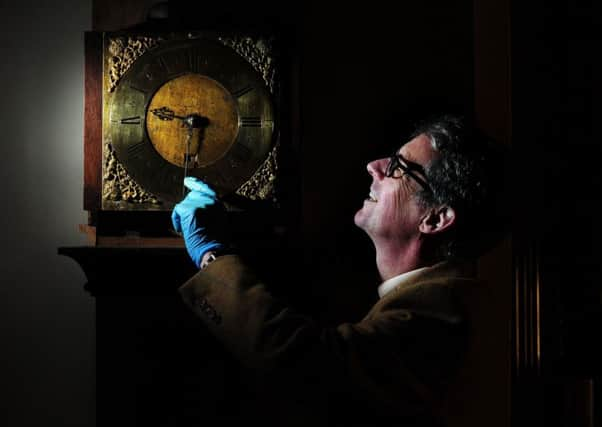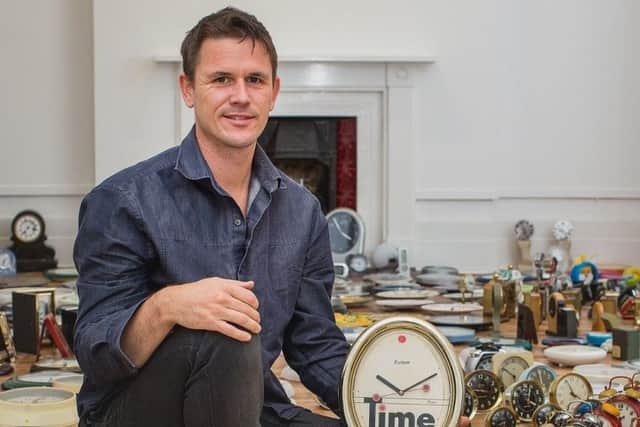Clocks to turn back time for'¨Priory tribute


On March 25, the last day of Greenwich Mean Time, one room of Nostell Priory, near Wakefield, will be given over to a ticking tribute to John Harrison, the Yorkshire clockmaker and inventor who revolutionised navigation by providing a way to calculate longitude.
Harrison’s Garden is the brainchild of artist Luke Jerram, and each of the clocks – 500 of which have been donated by staff, volunteers and friends of the National Trust property – will be set to a different time.
Advertisement
Hide AdAdvertisement
Hide AdHe said: “Harrison was born on the estate, his father was one of the priory’s carpenters, so it is a real privilege to be able to bring this project at the property.


“The importance of Harrison’s work can’t be underestimated. Without being able to calculate precise distances, sea travel was incredibly dangerous, but he changed all that.
“In the early 18th century he invented the marine chronometer, a pendulum clock which could be used at sea and which allowed sailors to accurately plot where they were.”
Legend has it that Harrison’s obsession with clocks began at the age of six when he was recovering from a bout of smallpox. He was apparently given a watch to amuse himself and spent hours listening to it and studying its moving parts.
Advertisement
Hide AdAdvertisement
Hide AdHe went on to become an expert horologist and the installation also coincides with the 300th anniversary of the completion of one of Harrison’s early wooden longcase clocks, only three of which have survived.


Mr Jerram added: “Before men like Harrison, people got up when the sun came up and went to bed when it went down and there was no way of measuring what happened in between.
“Now our entire lives are governed by time and while some people might say that clocks and watches are redundant in an age of smartphones, we have never been more conscious how quickly minutes turn into hours and hours pass into days and weeks. The clocks in Harrison’s Garden will be arranged in patterns and shapes along the floors and surfaces of the exhibition space and with each one set to a different time it will also become an acoustic work of art as they tick, click and chime throughout the day.”
As part of the celebration, visitors to Nostell Priory will also be able to view the 300-year-old clock up close and watch a specially commissioned film about his life and work.
Advertisement
Hide AdAdvertisement
Hide AdProject curator Chris Blackburn said: “At Nostell we celebrate the work of ordinary people crafting the extraordinary. We are very proud to look after one of John Harrison’s early handmade wooden clocks and we are looking forward to telling his story through this fascinating contemporary installation.”
Just as Harrison’s creativity started to tick at Nostell and developed over a lifetime, the art installation will grow in size as it tours three other National Trust properties across the country this year and next.
After it leaves Yorkshire in July, it will appear at Castle Drogo in Devon, Gunby Hall in Lincolnshire and Wales’ Penrhyn Castle with each asking the local community to donate an extra 500 clocks to the installation.
The National Trust’s contemporary arts programme manager, Grace Davies, said: “This will be a remarkable feast for the eyes and ears and it is fitting that the birthplace of John Harrison is providing the initial backdrop for this work. It is part of a season of work by artists that will shine a new light on the many places that we look after and give fresh perspectives on our rich and varied heritage.”